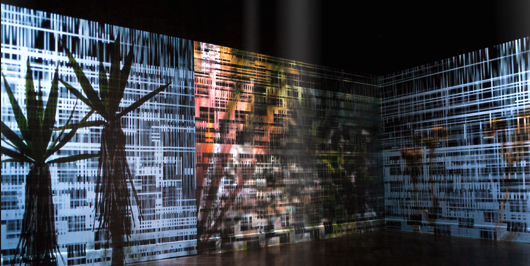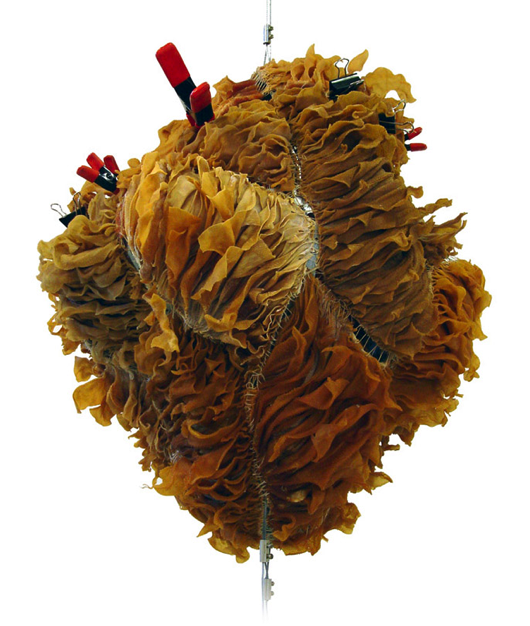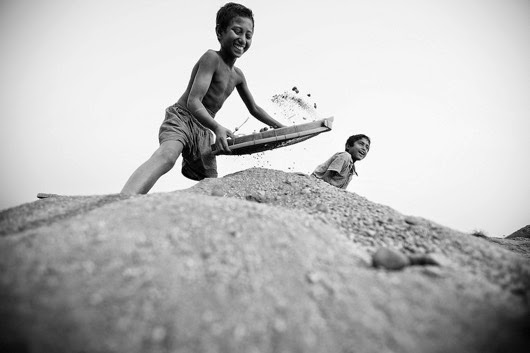“[T]he transcendent Word that is “in the beginning”, and, at the same time, reveals the dialogical and communicative nature of the God of Jesus Christ (John 1:1-5), and the Word that becomes “flesh”, body, to bring the presence of God into the essence of humanity, above all where it appears injured and suffering (John 1:14).”Cardinal Ravasi continues with an exposition of the theme by highlighting the parable of the Good Samaritan:
“The return to immanence is expressed in almost visual terms in the parable of the Good Samaritan, which is taken up in this context as a further thematic suggestion completing the perspective. The pages of the Gospel of Luke offer the image of a God present within a humanity harassed in its human condition. The God made flesh aids the injured man, marked by death and fragility.Micol Forti, curator of the Holy See pavilion and head of the Vatican Museums’ contemporary art collection, expresses her vision of the theme in particularly vibrant terms:
The “vertical-transcendent” dimension of the Logos and the “horizontal-immanent” one of the “flesh” are, in this sense, the axes of inquiry. These, including their “intersections”, need to be referred to for an understanding of the individual pieces, of the dialogue that they weave among themselves within the exhibition space.”
“There are two poles around which the project for the Pavilion of the Holy See revolves and takes shape: the Logos and the flesh. The Logos establishes a relationship, a harmony, a mediation; the flesh imposes an immanence, a track, a process of in-carnation.
Their inseparable link brings about a dialectic dynamism, irregular, elliptical, abruptly accelerating, precipitously slowing down, to solicit in the artists as in the public, a reflection on a twinning that is at the root of humanity itself.”
Forti then proceeds to introduce this year’s choice of artists - a choice she characterizes as having resulted from risk-taking - two women and one man, all in the early stages of their artistic practices, and all from places that merit the label “peripheral.”

The Colombian multi-disciplinary artist, Monika Bravo, presents “a narrative that is assembled and reassembled on six screens and as many transparent panels, placed on strongly colored walls. In every composition, Nature, Word - written and spoken - and artistic Abstraction present themselves as active elements of a heuristic vision, open to a degree of experimental uncertainty in the development of a new perceptual space and of a sensory fullness, through the gracefulness and poetic “manualness” with which the artist uses technological media.”

The Macedonian site-specific installation artist, Elpida Hadzi-Vasileva, “blends artisanal abilities, scientific knowledge and a powerful aesthetic vision. She has designed a monumental architectural installation for the Pavilion, whose “fabric,” almost a skin, a mantle, welcomes visitors both in a physical and symbolic dimension at the same time. Made with organic waste materials, in a way that leads from the ready-made to the re-made, the artist creates a cloth that is both an embroidery and a surface, a physical presence and transparency, an instrument of suggestion and surprise.”

And finally, the Mozambican photographer Mário Macilau, presents a “series of nine black and white photographs, taken in Maputo, the capital of Mozambique, [...] dedicated to the street children who, while still little find themselves facing life as survival. This is not a documentary, but a poetic work that brings the connections between the Now and the Already passed, the Near and the Far, the Visible and the Non-visible. The theme of the origin and the end of each artistic act is carried by the power of photographic composition in confrontation with the agony of the real.”
I believe, this year’s offering of the Holy See pavilion is again an excellent one and both well-balanced, with a representation of video, installation, sculptural and photographic art, and daring, in the choice of artists brought together to represent the Catholic Church at this important event in the art world. It is further confirmation that the Vatican is becoming serious again about engaging with contemporary art and that - to my mind - is essential.
1 Note that the quotes here are from the press kit provided by the Holy See, but that they are a re-translation from the Italian original instead of a use of the official English translation as is.

No comments:
Post a Comment